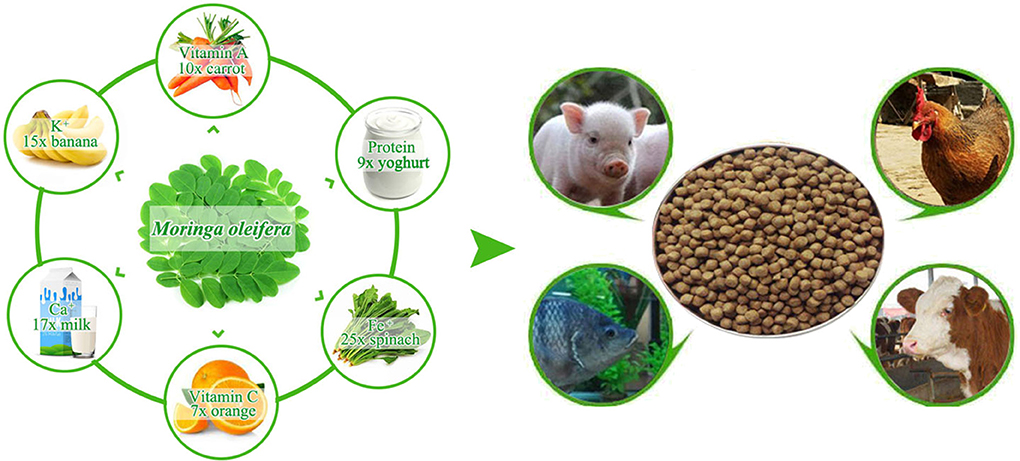(Protein) Did you know that the world needs to produce 75% more food by 2050 to feed everyone? As the global population grows, farmers will be hard-pressed to meet the rising demand for food while maintaining the quality of arable land, water systems, and the world’s ecosystems at large. How can livestock farmers in particular feed the world without breaking the planet in the process?
Farmers are increasingly discerning the connection between the environment, animal feeds ingredients, and the state of food security for generations to come. And thankfully, the agricultural industry is embracing sustainable feed solutions that can improve animal health and productivity while reducing pressure on our natural resources.
The need to change how we source protein-based animal feeds ingredients
Soy has long been a standard protein and milk replacement in much of the world, but much of the soybeans we produce are actually turned into livestock feed rather than food humans directly consume. Soybean meal is the most common protein source in compounded feeds for poultry, dairy cattle, and pigs worldwide.
However, soybean cultivation leads to deforestation, loss of biodiversity, and excessive use of pesticides — all of which are either bad for the environment, human health, or both. Therefore, our overreliance on soybeans must be put to an end. When we in the agricultural industry are focused on environmental sustainability, we must explore alternative proteins in our animal feeds ingredients.
The market is hungry for earth-friendly protein sources for feeds
The market for alternative proteins for animal feeds is set to exceed USD 4 billion by 2026. As of this writing, the demand for sustainable animal feeds is increasing, and suppliers like single-cell protein producers to insect farms are rising to meet the supply challenge. Let’s check out some of the best novel protein sources they’re making today.
Single-cell protein
Microbial or single-cell protein (SCP) is derived from unicellular algae, bacteria, fungi, or yeast that thrive on a variety of carbon sources. While SCPs have been around for some time, improvements in technology and research have led to the creation of new protein meals that are revolutionizing the animal feed industry, especially in aquaculture. As per Global Aquaculture Alliance, SCP-based feed ingredients provide a long-term, sustainable alternative to plant-based foods and cut down fishmeal usage in aquafeeds.
Seaweed and microalgae
Is it possible that seaweed can dramatically help in the fight against climate change? Asparagopsis armata and Asparagopsis taxiformis are two species of crimson submarine grass fed beef butcher with the ability to dramatically reduce methane emissions from livestock farming. It has been discovered that incorporating even a tiny amount of either seaweed into a cow’s diet can lower methane production by 98%. With over 1.5 billion cattle on the planet, seaweed’s ability to reduce animal methane emissions is significant.
Seaweed may also be used to increase animal health and consequently improve the sustainability of livestock production systems, according to the Food and Agriculture Organization of the United Nations.
Separate research may show similar positive effects of microalgae consumption in poultry.
Earthworm
The red earthworm is infiltrating the aquaculture feed market thanks to its high protein content and essential amino acids and lipids that are nearly identical to those found in fishmeal. Red earthworms have also been shown in studies to improve fish growth performance, boost reproduction, improve feed digestibility, reduce stress, and increase survival rates.
More research is required to confirm the potential of red earthworms to support fish growth and efficiently and sustainably replace a variety of conventional plant and animal protein sources.
Insects
Insects are an excellent protein source, with up to 82 percent protein and a variety of amino acids. They’re also one of the most productive sources of proteins in terms of output per surface area. The health advantages of insects in animal diets extend beyond protein; fatty acid content and antibacterial peptides have been shown to be beneficial. Therefore, utilizing insects for animal feed is both biologically and ecologically sound because many species, particularly chicken and fish, naturally consume them.
Another advantage of using insects as a protein source is their low carbon footprint. Crickets, yellow mealworms, and grasshoppers are said to emit 100 times less greenhouse gas than pigs and cows, according to Inseckt Farm, a startup founded in Uyo, Nigeria.
Pea protein
When it comes to delivering a lot of protein, peas are becoming increasingly viable as an alternative to soy meal. Studies have revealed that the addition of peas or pea proteins to baby pig diet improves nutrient absorption, which in turn leads to lower mortality rates and faster weight gain.
Sustainably sourcing protein for animal feeds is our only option
Since demand for meat and animal products continues to grow, one thing is certain: farmers and producers must find cost-effective feed management techniques that are more healthy for their livestock and the environment. This necessitates turning to safe, sustainable sources of protein as a key step toward rethinking our global food system. It won’t happen overnight, but even the tiniest adjustments can make a difference. The ability to feed an increasing world population while using fewer natural resources lies within our grasp.
